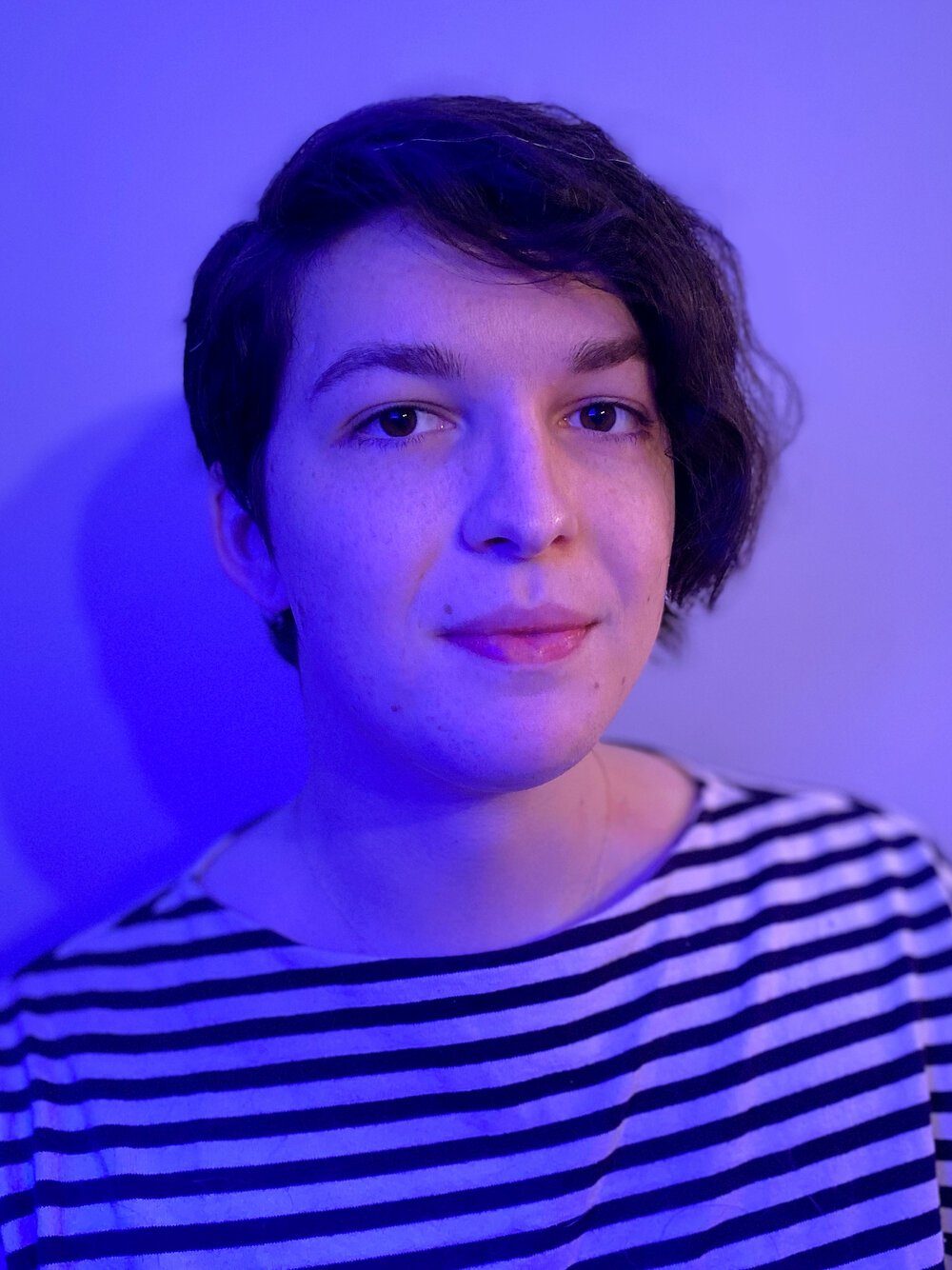TE: Hey Cat! Thanks so much for taking the time to chat. To start us off, can you talk a little about your background and trajectory as an artist, and the process of arriving at your current artistic practice, style, etc?
CG: I arrived at being an artist at a tumultuous time at the end of highschool. I had a lot of trouble at school and home, so entering my senior year I had planned on either dropping out or committing suicide. It was then when I took an art class and my art teacher believed in me and made me apply to art school. Once I found a love for painting in college, I knew that it was going to be my purpose. Art saved my life. My major inspirations stylistically spawned from 20th century painters like Francis Bacon and Kathe Kollwitz. Since then it has evolved, devolved, and changed many times into a more intricate and calmer practice.
TE: Art is absolutely life-saving. I love the way you describe your inspirations both evolving and “devolving” over time - I have definitely witnessed myself experiencing similar patterns with musical influences I’ve had in my past as well. What’s your relationship to music, and does it ever intersect with your practice? Do you listen to music while working? Is this your first time creating artwork specifically to accompany a musical work?
CG: Music is maybe more influential for me than visual art now. Many of the titles of my pieces are bits from songs that I was thinking about or listening to when I created a particular painting. I have done some smaller-scope album covers for friends, but this is certainly the most serious of them!
TE: Cover art is such an important and under-valued element of album-making. When I think about the albums that have been fixtures in my life, my mind instantly conjures an image of the cover, and I find that the artwork often becomes intrinsically linked to my memory of the music. How did you approach the painting for this album cover? Did you have a sense of what you wanted to do immediately, and in what ways did the excerpts you listened to of Alex’s music influence the direction you went in?
CG: I knew I wanted to have a trans person be the subject, it was imperative. The figure is based on a friend of mine. I also took some inspiration from the mood of the cover art of “Untrue” by Burial. How the piece turned out was the result of my own voice and the inspiration given by and driven from Alex being pinballed around. Visually we wanted a melding between the figure and wallpaper to to be woven into each other in places, like the figure was slowly being enveloped by it. There was no way to predict the spontaneity of that, so it ended up just happening through a series of accidents in the form of brushstrokes. I also wanted the wallpaper design itself to feel rhythmic in the lines and create a sense of tempo that reflected the music in the album, as well.
TE: Omg. I need to tell you that I’m currently sitting at my desk staring directly at a print of the album artwork from “Untrue” which is hanging on my wall! “Untrue” is one of my all time favorite albums, and I’ve been an obsessive Burial stan for many years, so I love that you drew from that album in your process. Burial’s music has always had an enigmatic and otherworldly quality for me - a quality which I think appears in Alex’s musical composition and lyrical writing in “Behind The Wallpaper” as well.
TE: Switching gears for a moment, and getting a bit more personal: as a trans person, I sometimes struggle with wishing for my art to be judged solely on the basis of its content and quality, while simultaneously feeling that my transness is such an integral part of my identity that everything I create is inherently trans, and desiring for that part of me to be acknowledged. As a trans and intersex creator, do you feel like those identities are always present and being expressed in some way through your art, and do you hope that people will engage with your art in a way that recognizes that context?
CG: Being a marginalized creator is such a challenging balance between being pigeon-holed into being seen or paid attention to only your marginalized identity (in my case trans & intersex), but also having that very important aspect of yourself recognized and seen to the degree of importance that it exists in your work. My queerness is part of the puzzle that gets pieced together when making visual art. It is always there to some degree because I made it, and sometimes it is very much what a piece is about. I sometimes want to classify each piece as “THIS PIECE IS ABOUT BEING TRANS.” “THIS PIECE IS NOT ABOUT BEING TRANS” so it can be viewed in the context I see it. But you sacrifice control of that to an extent when making anything public.
TE: I really, really feel that. It’s such a delicate line to walk and it takes a lot of courage, I think, to relinquish that control for the sake of continuing to create and share art publicly. What is something you wish people knew about the experience of being a trans person in the arts? How do you think the world can best support and amplify trans creativity and create opportunities for trans creators?
CG: There is virtually no space for us in “the fine arts” from my experience. I can count most of the trans women painters working today professionally on one hand. Sometimes I like to joke that I am the only intersex trans woman painter alive. It could be true, haha! I have been denied from shows for being trans and have been tokenized and simply part of a diversity effort countless times (although I think it’s getting better). I’ve had the most rude and invasive questions asked to me at art openings. People trying to solicit sex in exchange for money from me at my own show. If people want to support trans creativity, give us dang money. Grants, scholarships, concrete opportunities, spotlight, see us as whole people.
TE: So, so well said. So often the people and organizations in places of power approach marginalized creators in ways that feel opportunistic, or which serve to sensationalize our experiences in dehumanizing ways for clout or virtue-signaling. I’ve often felt that the simple act of being an out queer and trans person who willingly puts my body on stages has given certain people the sense that my visibility automatically allows them to be privy to my experiences, or allows them a free pass to ask personal and inappropriate questions…
TE: Speaking of identity and perception of self both inward and outward: many of your pieces are portraits or self-portraits - what makes portraiture special to you, and how do you feel it affects your relationship to yourself and the people you choose to depict?
CG: Portraiture is one of the few ways I feel like I can genuinely connect with other people and myself, so it has always been my focus. I have a tendency to be perceived as cold, intimidating or distant when it is not how I feel. Whenever I do a painting of someone I’m saying “hey, I love you enough to stare at your face for hours and recreate you because you’re special to me.” When I’m painting myself it is because I’m trying to convey memories/thoughts/feelings, even if it isn’t clear or concise. Art is about a human connecting with another human.
TE: That last sentence! What a great mission statement for all artists to keep close and to return to. Last question for you - what is one type of collaboration you’ve always wanted to explore, or a specific artist / organization it would be a dream to work with?
CG: Honestly, doing album covers is pretty great. It feels like such an excellent way to merge the two mediums. I have also really wanted to get into doing art for video games and maybe eventually films. Either promotional material or actually in them. Creating background work that adds to the feeling of a larger project would be really rewarding I think!
TE: Amazing! We feel so fortunate to have been able to collaborate with you in this way, and I can’t wait to someday play a video game you create artwork for…
TE: Cat, thank you so much for taking the time to chat and for being so thoughtful and generous with your responses. We’re honored to have your artwork accompanying our album and we’re so excited for the world to experience Behind The Wallpaper in its final form soon - music, artwork, and all…
Cat Graffam’s original painting, with layout design by Natalie Bontumasi (Good Thomas Design)


